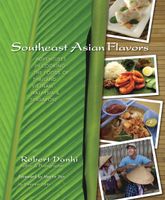Advertisement
Tamarind (Tamrindus indica)
By Robert Danhi
Published 2008
Widely known as “asam,” which translates as “sour,” tamarind has the unusual propensity to taste tart without being very acidic. It also has distinctly sweet undertones. Used extensively in Southeast Asia for soups, noodles, sauces, and even as a hair tonic, it can also be found in South American candies and drinks. It grows as a tree pod with a thin, brittle shell. Fresh pods and the paste made from them should be hydrated (reconstituted in water) before use. If tamarind is unavailable, substitute other sour ingredients such as lime juice, lemon juice, or vinegar. The flavor will be different but acceptable. Avoid buying the processed liquid forms of tamarind—their flavor is lackluster. The paste is usually labeled as seedless. This is a half-truth, since the seeds are not in the paste, but the fibrous seed pods are, making it necessary to process them to attain a smooth pulp. The recipes in this book call for measurements of processed pulp. Thai: makahm; Malay: asam; Vietnamese: me


